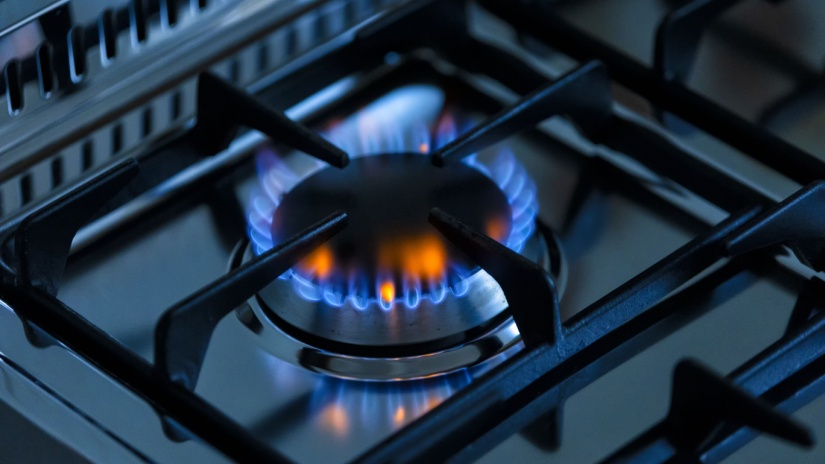Knowledge Centre
How is gas used in Australia?

Gas remains a widely used energy source, with more than 4.5 million Australian households connected to the gas network in 2024. However, as the shift towards renewable energy gains momentum, it's crucial to grasp how and where gas is used.
With petroleum and electricity prices climbing, many Australians are looking for alternatives—so is gas the way to go?
Gas comes with its own set of advantages, making it an excellent option for things like stoves and hot water systems. But gas does more than just heat our homes or fuel our cars. There’s a lot to learn about how gas is used in Australia. Read on to find out more.
LPG vs natural gas: What’s the difference?
The term "gas" can be confusing, as it's often used to refer to both LPG and Natural Gas (LNG). While these two types of gas are distinct, they share similarities and are often used in similar ways.
The key difference lies in their composition: LPG is propane, while LNG is methane. LPG has a higher caloric value than LNG, meaning it produces more energy and requires less fuel to generate the same amount of heat. Additionally, LPG is denser than both LNG and air, causing it to settle, whereas LNG is lighter and tends to rise.
You’ll typically find LPG in metal canisters used for barbecues, whereas LNG is delivered to homes and businesses through a mains gas network. Here are some key differences between LPG and natural gas:
- Energy content: LPG has more energy per unit than natural gas, so you need less of it to produce the same amount of heat.
- Combustion: LPG needs a higher oxygen-to-gas ratio (25:1) for proper combustion, compared to natural gas (10:1).
- Composition: LPG is made up of propane and butane, while natural gas is primarily methane.
- Chemical formulas: LPG (Propane: C3H8, Butane: C4H10) vs. Natural Gas (Methane: CH4).
- Weight: LPG is heavier than air, while natural gas is lighter.
- Energy density: LPG has a higher energy density (93.2MJ/m³) compared to natural gas (38.7MJ/m³).
- Liquefaction: LPG is liquefied by pressurisation, while natural gas is turned into LNG through cooling.
- Distribution: LPG is delivered in bottles or tanks, whereas natural gas is supplied through pipelines.
- Appliance pressure: LPG appliances operate at 2.75 kPa, whereas natural gas appliances operate at 1.1 kPa.
- Derivation: LPG is not natural gas but is derived from processing natural gas.
LPG vs natural gas: The advantages
LPG advantages:
- Higher energy content.
- Portable and widely available.
- Often less expensive.
Natural gas advantages:
- Easier delivery through pipelines.
- Produces slightly less CO2 when burned.
How is LPG gas used?
LPG (Liquefied Petroleum Gas) is a great energy source because it produces a lot of heat and burns cleaner due to its low sulphur content. About half of the LPG used goes towards heating and cooking, often replacing natural gas.
The other half is split between cars and industrial uses. Although LPG makes up less than 2% of the total energy we use, it's still a significant alternative to gasoline.
LPG is usually delivered in large tanks and placed outside homes or buildings. Refillable gas canisters are available for stoves, heaters, and barbecues, and smaller canisters can power portable hair styling tools. Many Australian households use LPG for:
- Petrol, which accounts for 45% of its use.
- Electricity, at 21%.
- Gas, at 14%.
Considering that 15% of electricity is generated using gas turbines, it’s clear that gas is a big part of our energy consumption. You might be using more LPG than you realise.
LPG is also a popular choice for those looking to save money on petrol and diesel. Many modern taxis run on LPG because it's cheaper and cleaner than petroleum, often making it more affordable.
However, there are some downsides to using LPG, mainly safety and cost. The high pressure needed to store LPG can sometimes cause tank bursts if not handled properly, and it's highly flammable. But suppliers take many safety measures to ensure LPG is as safe as natural gas. While LPG is more expensive than natural gas, it can be a good option when natural gas isn't available.
LPG disadvantages
- LPG isn't a perfect solution. Although it produces fewer harmful emissions than coal or oil, it's not completely clean energy.
- LPG has lower energy density than diesel or gasoline, so you'll need more of it to travel the same distance. On average, LPG is about 25% less dense than regular unleaded petrol, meaning you'll use around 25% more fuel to cover 100 km.
- Installing an LPG system in your car can be expensive. While there are government rebates, the initial setup cost is still high. LPG cars require regular tank servicing by a licensed technician, which can add to the overall cost.
- When refuelling with LPG, there's more gas leakage into the air compared to gasoline. Although LPG is less volatile, this leakage still poses risks of explosion and fire.
The future of gas in Australia
The Australian Government has introduced a plan to guide the role of gas in achieving net zero emissions by 2050. This strategy aims to keep gas affordable as the country shifts to a more renewable energy grid while maintaining Australia's reputation as a dependable trading partner.
Minister for Resources and Northern Australia, Madeleine King, unveiled the Future Gas Strategy. This plan will support Australian-made solutions and ensure that decisions about gas supply and production are based on the best available information.
The Strategy is built on six key principles that will shape government policy on gas:
- Australia is committed to reducing global emissions and achieving net zero by 2050.
- Gas must remain affordable for Australians during the transition to net zero.
- New gas supplies are needed to meet demand as the economy shifts to more sustainable energy sources.
- Reliable gas supply will gradually support higher-value and essential uses. Households will still have a choice in how they meet their energy needs.
- Gas and electricity markets must adapt to stay relevant throughout the energy transition.
- Australia will continue to be a reliable energy trading partner, including in LNG and low-emission gases.
Want to sign up to a new gas plan?
If you’re looking to change gas providers or adjust your plan, the best thing that you can do is speak to the experts at Compare Energy. Our team is available on 1300 706 190 and we’re ready to answer all your gas-related questions.

